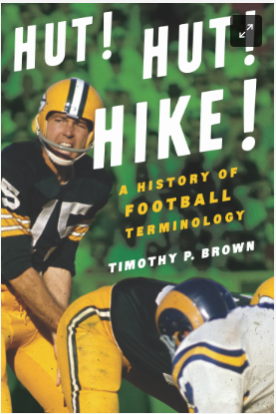Los Angeles Kings Hockey Team History
Born in 1967, during the NHL's major expansion, the Kings faced an uphill battle. Early years were marked by inconsistency, with playoff appearances remaining elusive. However, the arrival of Wayne Gretzky in 1988, arguably the greatest hockey player ever, sparked a period of excitement and offensive dominance. Gretzky, alongside fellow Hall of Famers Marcel Dionne and Luc Robitaille, propelled the Kings to their first Stanley Cup Finals appearance in 1993. Despite falling short, the "Gretzky Era" elevated the Kings' profile and laid the foundation for future success.
Following Gretzky's departure, the Kings entered a period of rebuilding. Yet, they never lost sight of their championship aspirations. The drafting of defenseman Rob Blake and the emergence of homegrown talent like Dustin Brown signaled a shift towards a more defensive, physical style of play. Under coach Darryl Sutter, this new identity solidified. The arrival of Anze Kopitar in the 2004 draft provided a crucial piece – a skilled center who could excel in Sutter's system.
The culmination of years of strategic drafting, development, and a commitment to a defensive philosophy arrived in 2012. The Kings, led by Kopitar's leadership and the goaltending brilliance of Jonathan Quick, captured their first Stanley Cup. This victory, achieved as an eighth seed in the playoffs, defied expectations and cemented the Kings' identity as a team built for the long haul.
Two years later, the Kings proved their championship wasn't a fluke. They repeated as Stanley Cup champions, showcasing their resilience and ability to perform under pressure. Since then, the Kings have remained competitive, consistently reaching the playoffs and developing young talents like Adrian Kempe and Gabriel Vilardi.
The Los Angeles Kings' history is a testament to the power of a long-term vision. They embraced a defensive identity, drafted and developed key players, and fostered a culture of winning. From early struggles to Stanley Cup glory, the Kings have become a beloved team in Los Angeles, proving that grit, determination, and a commitment to excellence can lead to championship success.
Vegas Golden Knights Hockey Team History
-Birth of a Franchise (2016): In 2016, the NHL awarded an expansion franchise to Las Vegas, the first major league sports team in the city.
-The Expansion Draft (2017): Unlike traditional expansion teams, the Golden Knights were built through a unique draft, selecting unprotected players from existing NHL rosters.
-Immediate Success (2017-2018): Led by a talented core built through the draft and shrewd trades, the Golden Knights shocked the hockey world. They reached the Stanley Cup Finals in their first season, ultimately losing to the Washington Capitals.
-Continued Playoff Contenders (2018-Present): Despite not replicating their initial Finals appearance, the Golden Knights haven't strayed far. They've consistently qualified for the playoffs, reaching the Conference Finals twice (2019, 2020) and solidifying themselves as a force in the Western Conference.
-Stanley Cup Champions (2023): The Golden Knights finally captured the elusive Stanley Cup in 2023, defeating the Florida Panthers in five games. This victory cemented their place in NHL history as one of the most successful expansion teams ever.
-Factors Behind Their Success: Several factors contributed to the Golden Knights' rapid rise.
-Shrewd Management: The team's management expertly navigated the expansion draft, acquiring a well-rounded roster with championship aspirations.
-Star Power: Players like Marc-Andre Fleury, William Karlsson, and Mark Stone emerged as core pieces, leading the team offensively and defensively.
-Passionate Fanbase: Despite being a new team, the Golden Knights cultivated a dedicated fanbase, creating a vibrant home ice advantage in Las Vegas.
The Vegas Golden Knights' story is still being written. They've defied the odds, becoming a force in the NHL and etching their name in hockey history. Their journey serves as an inspiration for future expansion teams, proving that success can be achieved quickly with the right strategy and a passionate team identity.
San Jose Sharks Hockey Team History
Over the next few articles, we'll explore the rich history of the San Jose Sharks, swimming through the victories, the heartbreaks, and the iconic moments that have cemented their place in the NHL. We'll delve into the early days, where the teal wave first crashed onto the scene, and chart their course as they battled for respect and a Stanley Cup.
But a team is only as strong as the individuals who wear its colors. We'll also be shining a spotlight on the legendary players who've donned the Sharks' jersey. From the goal-scoring machines who lit up the lamp to the defensive stalwarts who shut down opponents, we'll celebrate the athletes who have etched their names into Sharks lore.
And of course, no team thrives without a guiding hand. We'll be looking back at the influential coaches who have shaped the Sharks' identity, from the strategists who masterminded winning seasons to the motivators who rallied the team through adversity.
So, whether you're a die-hard Sharks fan or simply a hockey enthusiast, get ready to join us on this exciting journey. We'll explore iconic players, legendary coaches, unforgettable moments, and everything in between. Let's drop the puck and celebrate the San Jose Sharks!
Anaheim Ducks Hockey Team History
From Disney Magic to Stanley Cup Glory (1993-2006):
-Founded in 1993 by The Walt Disney Company, the team was initially named the Mighty Ducks of Anaheim, inspired by the popular Disney movie of the same name.
-Entering a league dominated by established franchises, the Mighty Ducks quickly captured the hearts of fans with their exciting style of play and a focus on family-friendly entertainment.
-In 2003, defying expectations, the Mighty Ducks led by superstars Teemu Selanne and Paul Kariya, captured the Stanley Cup championship, defeating the heavily favored New Jersey Devils.
Transition to the Anaheim Ducks (2006-Present):
-The Walt Disney Company sold the team in 2006, marking the end of the "Mighty Ducks" era. The new ownership rebranded the team as the Anaheim Ducks, retaining the iconic orange and black color scheme.
-The Ducks continued to be a competitive force in the Western Conference, reaching the playoffs on multiple occasions.
-Notable players during this period include Ryan Getzlaf, Corey Perry, and Scott Niedermayer, who played a pivotal role in leading the Ducks to their second Stanley Cup victory in 2007.
The NHL's Western Conference History
Expansion and Early Years (1967-1980s):
-1967: The NHL doubles in size, creating the Eastern and Western Conferences with six teams each. Original Western Conference members included the Chicago Blackhawks, Los Angeles Kings, Minnesota North Stars (later Dallas Stars), Oakland Seals (later California Golden Seals and eventually folded), St. Louis Blues, and Vancouver Canucks.
-Early Domination by Canadian Teams: Montreal Canadiens, a dominant force in the East, found fierce competition in the West with teams like the Chicago Blackhawks (Stanley Cup winners in 1961) and the Montreal Canadiens' arch-rivals, the Toronto Maple Leafs (who joined the West during expansion).
The Rise of the "Gretzky Era" and Expansion (1980s-1990s):
-The arrival of Wayne Gretzky, "The Great One," with the Edmonton Oilers in 1979, ushered in a new era of offensive dominance. The Oilers, led by Gretzky and his linemate Mark Messier, became a nearly unstoppable force, winning four Stanley Cups in five years (1984-1988).
-Continued Expansion: The Western Conference witnessed further growth with the addition of franchises like the Calgary Flames (1980, Stanley Cup winners in 1989), Winnipeg Jets (1992, later relocated to become the Arizona Coyotes in 1996), and the San Jose Sharks (1991).
The "Battle of Alberta" and New Rivalries (1990s-2000s):
-The rivalry between the Alberta-based Calgary Flames and Edmonton Oilers intensified, creating one of the NHL's most heated rivalries, known as the "Battle of Alberta."
-New contenders emerged: The Detroit Red Wings (originally an Eastern Conference team) moved to the West in 1993, igniting a new rivalry with the Colorado Avalanche (established in 1995) and sparking a period of Western Conference dominance. These three teams combined for six Stanley Cup victories between 1996 and 2008.
Recent Years and Continued Growth (2010s-Present):
-The Western Conference continues to evolve with the addition of the Vegas Golden Knights (2017), who defied expectations by reaching the Stanley Cup Final in their inaugural season.
-Recent Stanley Cup champions in the West include the Chicago Blackhawks (2013, 2015), the Los Angeles Kings (2012, 2014), and the St. Louis Blues (2019).
-The conference boasts a diverse group of talented players and teams, fostering thrilling competition and ensuring the Western Conference remains a force to be reckoned with in the NHL.
A Legacy of Grit, Skill, and Unforgettable Moments:
The NHL's Western Conference has carved its niche in hockey history. From the offensive brilliance of the "Gretzky Era" to the intense rivalries and recent success stories, the West has provided countless iconic moments and established itself as a breeding ground for exceptional players and passionate fanbases. As the NHL continues to evolve, the Western Conference promises to remain a hotbed of competition and a driving force in the future of the sport.
Calgary Flames Hockey Team History
Atlanta's Expansion Team (1972-1980):
-Founded in 1972 as one of two expansion teams alongside the New York Islanders, the Flames entered the NHL amidst competition from the rival World Hockey Association (WHA).
-The Atlanta Flames struggled in their early years, failing to qualify for the playoffs in their first six seasons. Despite flashes of brilliance from players like Tom Lyons and Dale Tallon, financial difficulties plagued the franchise.
A Move North: Birth of the Calgary Flames (1980-1989):
-In 1980, seeking a more stable financial footing and a passionate fanbase, the Flames relocated to Calgary, Alberta. This move marked the beginning of a new era for the franchise.
-The Calgary faithful embraced the team with open arms, filling the Stampede Corral and creating a vibrant atmosphere. Under the leadership of GM Al Coates and coaches like Bob Gainey, the Flames quickly transformed into a competitive force.
The Rise of a Dynasty and Stanley Cup Glory (1980s):
-Calgary witnessed the emergence of a young, talented core featuring Lanny McDonald, Mike Keenan, and rookie sensation Hakan Loob. This group, combined with the veteran leadership of players like Bob Baun and Jim Peplinski, propelled the Flames to their first playoff appearance in Calgary in 1981.
-The Flames became a perennial contender throughout the 1980s, reaching the Stanley Cup Finals in 1986 but falling short to the Montreal Canadiens. However, their relentless pursuit of Lord Stanley's Cup paid off in 1989.
-Led by MVP defenseman Doug Gilmour and the goaltending duo of Mike Vernon and Trevor Kidd, the Flames defeated the Montreal Canadiens in a thrilling six-game series, capturing Calgary's first and only Stanley Cup championship.
Post-Dynasty Years and Rebuilding (1990s-2003):
-Following their championship victory, the Flames faced challenges maintaining their dominance.
-Key players like Gilmour and McDonald departed, and the team entered a period of rebuilding.
Despite flashes of brilliance from players like Sergei Makarov and Theoren Fleury, the Flames struggled to consistently reach the playoffs in the late 1990s and early 2000s.
The Return to Relevancy and the Red Mile (2004):
-The 2003-04 season was a turning point for the Flames. Led by the dynamic duo of Jarome Iginla and Miikka Kiprusoff, the Flames embarked on a magical run, capturing the hearts of fans and the city.
Calgary rallied behind their team, turning the streets around the Saddledome into a sea of red, a phenomenon dubbed the "Red Mile." The Flames reached the 2004 Stanley Cup Finals but were ultimately defeated by the Tampa Bay Lightning.
Toronto Maple Leafs Hockey Team History
Early Days and the Birth of a Legend (1917-1927):
The Maple Leafs' story began in 1917, amidst the fledgling years of the National Hockey League (NHL). Initially known as the Toronto Arenas, they captured the inaugural Stanley Cup against the Vancouver Millionaires. However, financial difficulties forced the team to withdraw from the league soon after.
In 1919, they returned as the Toronto St. Patricks, reflecting the city's large Irish population. Conn Smythe, a visionary businessman, purchased the team in 1927 and renamed them the "Toronto Maple Leafs," a symbol of Canada's national identity.
A Dynasty Takes Root: The Winning Tradition (1930s-1950s):
The 1930s and 1940s marked a golden age for the Maple Leafs. Led by legendary coach Hap Day and iconic players like "Ace" Bailey and Syl Apps, they established a dominant dynasty. Their fast-paced, offensive style, dubbed the "Toshiba Rebound," overwhelmed opponents. This era saw four Stanley Cup victories, solidifying the Leafs' place as a powerhouse in the NHL.
The Post-Apps Era and a Quest for Redemption (1950s-1960s):
Following the retirement of captain Ted Apps in 1948, the Leafs entered a period of transition. While they remained competitive, their dominance waned. The arrival of superstars like Frank Mahovlich and Tim Horton in the 1960s rekindled hope, culminating in another Stanley Cup win in 1964.
The Curse of 1967 and the Long Wait (1967-Present):
A controversial officiating call in the 1967 Stanley Cup Finals against the Montreal Canadiens marked a turning point. Many fans believe this incident ushered in a "curse" that has kept the Stanley Cup out of Toronto ever since.
Despite flashes of brilliance with players like Darryl Sittler, Wendel Clark, Mats Sundin, and Auston Matthews, the Leafs haven't reached the promised land. They've come close, reaching the Conference Finals on several occasions, but the ultimate prize remains elusive.
More Than Just Cups: A Legacy of Passion and Identity:
The Maple Leafs' legacy transcends Stanley Cup victories. They are a cultural icon in Canada, representing the nation's passion for hockey. Their iconic blue and white jerseys are a source of national pride, and "Maple Leafs Nation" is a testament to their unwavering fanbase.
Columbus Blue Jackets Hockey Team History
Early Struggles and Foundation Building (2000-2009):
-The Blue Jackets entered the NHL amidst high expectations, but struggles marked their initial years.
-The team needed to gain experience and faced the challenge of competing against established franchises.
-Despite the early hardships, the Blue Jackets drafted and developed talented players like Rick Nash, a dynamic scorer who became a fan favorite.
Finding Their Stride and Playoff Breakthrough (2010s):
-The 2010s witnessed a shift in the Blue Jackets' fortunes. With a more experienced roster and a focus on defensive play, the team achieved its first playoff appearance in 2009.
-The arrival of goaltender Sergei Bobrovsky in 2012 proved pivotal. His stellar play and the emergence of young players like Brandon Saad and Seth Jones propelled the Blue Jackets to consistent playoff appearances throughout the decade.
-A highlight of this era was the 2019 Stanley Cup playoffs. The Blue Jackets, defying expectations, upset the heavily favored Tampa Bay Lightning in the first round, marking their first-ever playoff series victory.
Recent Years and Transition (2020s-Present):
-The Blue Jackets have faced challenges in recent seasons. Key players departed, and the team entered a period of rebuilding.
-Despite the recent struggles, the Blue Jackets remain committed to developing young talent through the draft and their farm system. They boast promising prospects like Cole Sillinger and Yegor Chinakhov, who are expected to contribute significantly in the coming years.
A Committed Fanbase and Looking Ahead:
The Columbus Blue Jackets have fostered a passionate fanbase known for their dedication and support. Nationwide Arena, the team's home ice, provides a vibrant atmosphere for players and fans alike.
Looking ahead, the Blue Jackets strive to return to the playoffs and contend for a Stanley Cup title. With a developing young core and a strong focus on scouting and development, the team is determined to build a sustainable winning culture and leave its mark on the NHL landscape.
Carolina Hurricanes Hockey Team History
-Roots in New England (1972-1997):
-The story begins with the Hartford Whalers, founded in 1972 as a member of the World Hockey Association (WHA). Despite early success, the WHA merged with the NHL in 1979, and the Whalers found themselves struggling to compete financially in a crowded market.
-The Whalers boasted talented players like Gordie Howe (briefly playing alongside his sons), Ron Francis, and Kevin Dineen, but consistent playoff success eluded them.
-Transplanted to Carolina (1997-Present):
-Facing financial difficulties and dwindling attendance, the Whalers relocated to Raleigh, North Carolina, in 1997, becoming the Carolina Hurricanes.
-The early years in Carolina were marked by a period of rebuilding. However, the Hurricanes quickly embraced their new identity, adopting a storm-themed logo and colors that resonated with the local fanbase.
-The Rise of a Contender (1999-2006):
-The late 1990s and early 2000s saw the emergence of a talented core group of players like Ron Francis, Jeremy Roenick, and eventually, the electrifying Erik Cole.
-The Hurricanes reached their first Stanley Cup
Finals appearance in 2002, ultimately falling to the Detroit Red Wings. This run ignited a passionate fanbase and established the Hurricanes as a force in the Eastern Conference.
-A Championship and Beyond (2006-Present):
-In 2006, the Carolina Hurricanes, led by the dynamic duo of Eric Staal and Justin Williams, captured their first Stanley Cup against the Edmonton Oilers. This victory cemented their place in Carolina sports history and solidified their fanbase's loyalty.
-The post-championship era has been a mixed bag for the Hurricanes. They've made several playoff appearances but haven't reached the Stanley Cup Finals again. Recent years have seen a focus on developing young talent and building a team for sustained success.
-A Legacy of Resilience and Community:
The Carolina Hurricanes' journey is a testament to resilience and the power of a passionate fanbase. Despite facing challenges, the team has become an integral part of the Carolina community, actively engaging in charitable endeavors and fostering a culture of inclusivity.
Colorado Avalanche Hockey Team History
-Roots in Quebec City: The Quebec Nordiques (1972-1995):
-The Avalanche story starts in 1972 with the founding of the Quebec Nordiques, one of the original franchises in the World Hockey Association (WHA).
-The Nordiques enjoyed some success in the WHA, even winning the Avco Cup championship in 1977, but ultimately joined the NHL after the WHA's merger in 1979.
-Despite boasting talented players like Michel Goulet and Joe Sakic, the Nordiques struggled to find consistent playoff success in Quebec City.
-Financial difficulties and a lack of a modern arena ultimately led to their relocation.
-A New Era Dawns in Denver: The Birth of the Avalanche (1995-Present):
-In 1995, the Nordiques were sold and relocated to Denver, Colorado, becoming the Colorado Avalanche. The move brought a fresh start and a state-of-the-art arena, the Pepsi Center (now Ball Arena).
-Under the leadership of coach Marc Crawford and star players like Joe Sakic, Patrick Roy, and Peter Forsberg, the Avalanche quickly established themselves as a force to be reckoned with.
-Dominant Dynasty and Stanley Cup Victories (1996-2001):
-The Avalanche's impact was immediate. In their first season in Denver, they captured the Pacific Division title and went on to sweep the Florida Panthers in the Stanley Cup Finals, becoming the first relocated team to win the championship in their inaugural season.
-Led by the "Legion of Doom" line of Sakic, Forsberg, and Claude Lemieux, the Avalanche continued their dominance. They captured another Stanley Cup title in 2001, defeating the New Jersey Devils in a thrilling seven-game series.
-A Period of Transition and Renewed Success (2001-Present):
-The departure of key players like Roy and Forsberg marked a period of transition for the Avalanche. Despite flashes of brilliance, including reaching the Stanley Cup Finals in 2003, consistent success proved elusive.
-The team drafted future stars like Gabriel Landeskog and Nathan MacKinnon, ushering in a new era of Avalanche hockey.
In 2022, the Avalanche returned to the pinnacle, defeating the Tampa Bay Lightning to claim their third Stanley Cup championship.



.jpg?https://jerseydispatch.com/pfeL/p/c312642c0431e75b485e432232c99c1c/website/Daily-Sports-Uniform-Number-History/February/February-8-Jersey-Numbers/Images/.Basketball_at_Pas-en-Artois,_France,_1918_(20166469838).jpg)
.jpg?https://jerseydispatch.com/pfeL/p/c312642c0431e75b485e432232c99c1c/website/Sports-History-Photo-of-the-Day/February-Images/February-8-Image/images/.640px-Arctic_Sisterhood_Basketball_banner,_Nome_(NOWELL_200).jpg)





